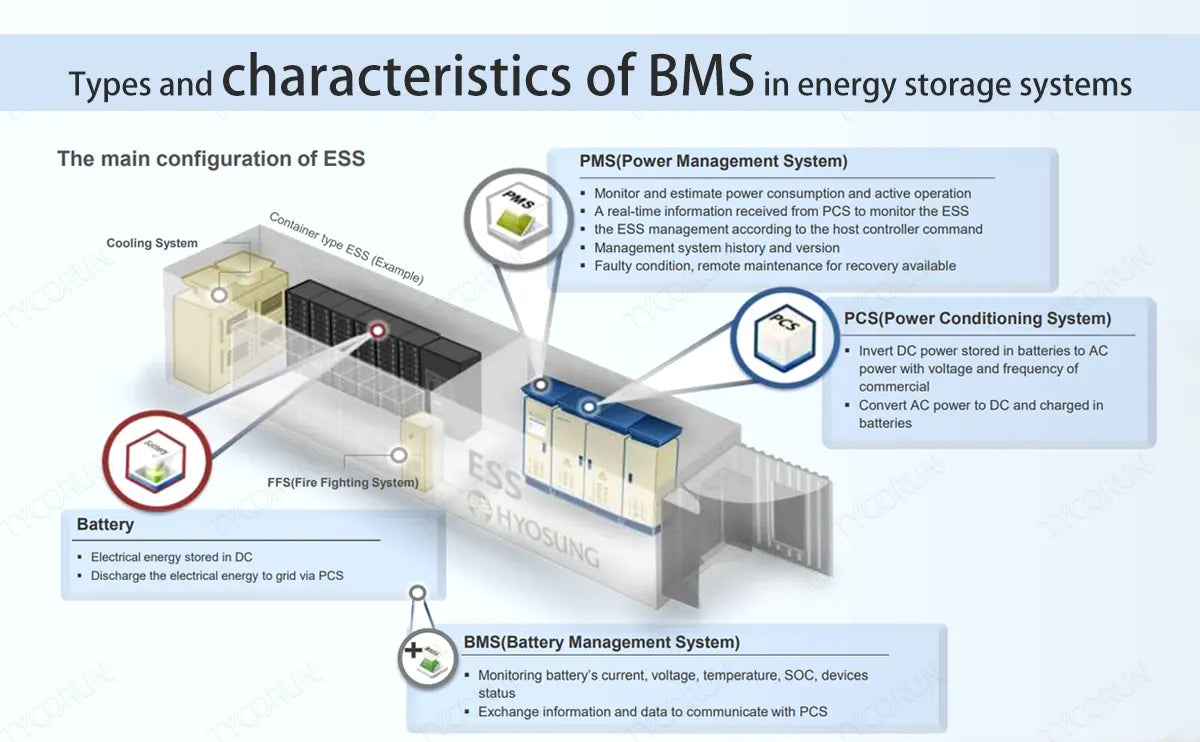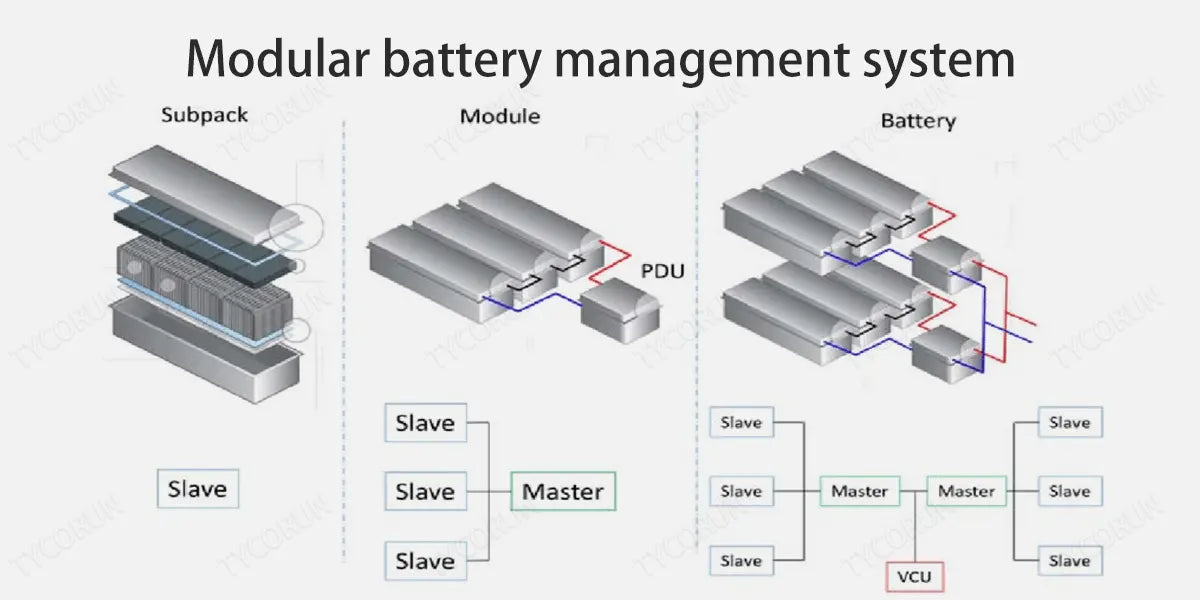
Main content:
The battery management system in the energy storage system is an important part of ensuring the safety and stable performance of the energy storage system. There are three main types of technologies in the market today, including distributed, centralized, and modular.
1. Distributed battery management system
The distributed BMS integrates the monitoring and control of each battery cell inside the battery cell, and transmits the information to the main controller through the communication protocol. Like distributed power supply.
The biggest difference between it and the centralized one is that each battery cell has an independent monitoring and control system, and there is no need to interact with each other.
● Advantages of distribution:- Higher reliability
Since each battery cell has an independent monitoring and control system, the reliability of the distributed BMS is higher. Even if one cell fails, the others will still work properly. The overall performance of the system will not be affected too much.
- Easy to maintain and upgrade
Maintenance and upgrades are relatively easy due to the relatively simple structure of the distributed structure, where each battery cell can operate independently. In the event of a lithium battery failure, it can be replaced without having to shut down for maintenance and upgrades of the entire system.

- More flexibility
The monitoring and control system is dispersed within each cell, making the system more flexible. The battery cells can be increased or decreased according to the actual demand, regardless of the complexity of the overall system distribution.
● Disadvantages of distribution:- The cost is higher
Since each battery cell needs to be installed with an independent monitoring and control system, the cost is relatively high. Moreover, for large-scale energy storage systems, distributed BMS requires the installation of a large number of monitoring and control systems, which further increases the cost.
- Communication issues
The distributed BMS needs to transmit the information of each battery cell to the main controller through a communication protocol, and if there is a communication problem, it can lead to the failure of the entire system. In addition, since each cell needs to communicate with the main controller, the communication load is relatively large.
2. Introduction of centralized BMS
The centralized BMS centralizes the monitoring and control of all battery cells (12v 100ah lithium ion batteries) in one main controller, and transmits information to the main controller via a communication protocol.
● Advantages of centralization:The cost is lower Since only one main controller is required, the cost is relatively low. Especially for small-scale energy storage systems, the cost of the system can be reduced.
- The communication load is small
Since the centralized BMS only needs one main controller, the communication load is relatively small, which can effectively reduce the occurrence of communication problems.

● Disadvantages of centralized:
- Less reliable
Since the monitoring and control of all battery cells are concentrated in one main controller, if the main controller fails, it may lead to the failure of the entire system, and the system reliability is low.
- Difficult to maintain and upgrade
Maintenance and upgrades are difficult because monitoring and control of all battery cells is centralized in a single master controller. Once the main controller fails, it needs to be shut down for maintenance and upgrades of the entire system.
3. Modular battery management system
Modular BMS is to divide the battery cell (12 volt 200ah lithium battery) into several modules. Each module has an independent monitoring and control system, and transmits information to the main controller via communication protocols.
● Advantages of modularity:
- The cost is moderate
Modular BMS requires the installation of several monitoring and control modules, which is moderately costly compared to distributed BMS and centralized BMS.
- High reliability
Since each module has an independent monitoring and control system, the reliability of the system is high. Even if one module fails, the other modules can still work normally, and the overall performance of the system will not be greatly affected.
- Flexibility
Monitoring and control modules are scattered within each battery module, so the system is more flexible. Battery modules can be increased or decreased according to actual needs, regardless of the complexity of the system as a whole.

● Disadvantages of modularity:
- The communication load is large
The information of each module needs to be transmitted to the main controller via the communication protocol, and the communication load is relatively large.
- Maintenance and upgrades are difficult
Maintenance and upgrades are difficult due to the installation of several monitoring and control modules. If a module fails, it needs to be shut down for maintenance and replacement, which can affect the performance of the entire system.
Each of the three technologies has its own advantages and pain points, and needs to be selected according to the actual application scenario. For large-scale energy storage systems, distributed technology can improve the reliability and stability of the system, but the cost is high.
For small-scale energy storage systems, centralized technology is relatively low-cost, but less reliable. Modularity strikes a balance between cost and reliability, but with communication loads and maintenance upgrades to take into account.
4. Conclusion
In the future, BMS technology will pay more attention to the improvement of real-time monitoring and control capabilities, and will also pay more attention to the standardization and unification of communication protocols to improve the compatibility and interoperability of equipment from different manufacturers.
Related articles: top 10 BMS system companies, BMS for lithium ion battery, Top 5 energy storage BMS companies